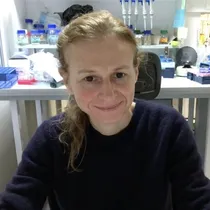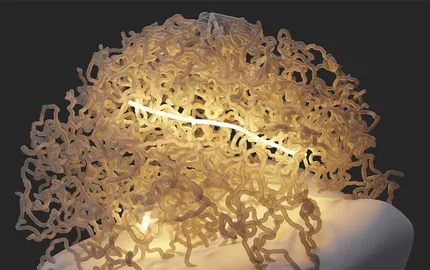Team
Compartmentalization and Dynamics of Nuclear Functions
Presentation

The tri-dimensional organization of the genome is clearly linked to its function as it varies during the cell cycle and upon differentiation in metazoan.
However, the causal relationship between nuclear organization and function remains often elusive. Budding yeast has proven to be an excellent model system for testing the functional role of higher-order chromatin organization. Extensive studies over the last two decades have revealed a dynamic yet well-defined organization of the yeast genome, which impacts on gene expression and genome stability through mechanisms that are still poorly understood (Taddei et al, 2012 ; Miné-Hattab and Taddei 2019).
Using this model system, we ask three main questions:
1- How nuclear organization affects two essential functions of the genome: gene expression and the maintenance of genome integrity?
2- What determines the spatial and temporal behavior of chromatin?
3- What is the physical nature of subnuclear compartments?
One of the prominent features of nuclear organization is the existence of subnuclear compartments that are not membrane-enclosed but yet concentrate specific factors forming microenvironment that favor or impede particular activities. Deciphering how such microenvironments are formed despite the absence of physical barrier to delimitate them, and what regulate their dynamics in relation to changes in genome activity is a key step in understanding how nuclear organization participates in nuclear function.
To address this question, we focus on two types of subnuclear compartments: silencing foci, corresponding to chromatin-repressed regions and ii) repair foci, formed at the site of a DNA double strand break.
Using advanced super-resolution microscopy and single molecule approaches (PALM: Photo Activable Localization Microscopy and single particle tracking), we study the dynamics and structure of chromatin and telomeric factors. Combining these experimental data with statistical analysis and modeling approaches (in collaboration with Aleksandra Walczak and Thierry Mora, ENS Paris) we aim at deciphering the physical mechanisms driving the formation and maintenance of these subnuclear compartments (Heltberg et al., 2021; Miné-Hattab et al., 2021).
Combining genetics, quantitative microscopy and genome-wide chromatin analyses (HiC, ChIP seq, RNA seq, etc.), we study the physical and molecular determinants underlying the spatial organization of the genome (Hocher et al., 2018; Hozé et al., 2013; Ruault et al., 2011, 2021); and its dynamics following genotoxic stresses (see project 2: DNA repair), or during metabolic transitions. In particular, we focus on the transitions into quiescence and upon return to growth ((Guidi et al., 2015) project 3).
To directly test the impact of the nuclear organization on gene expression and genome stability we develop tools to manipulate nuclear organization (Batté et al., 2017; Dubarry et al., 2011; Hocher et al., 2018; Loïodice et al., 2014).
As the analysis of yeast chromosome biology have been often predictive of mechanisms influencing essential processes in different species, we anticipate that basic principles will emerge from our studies with broad implications relevant in other organisms.













 Welcome to our new PhD student Fadma Lakhal ! - 5 September 2022
Welcome to our new PhD student Fadma Lakhal ! - 5 September 2022 Have a nice retirement ! - 30 September 2022
Have a nice retirement ! - 30 September 2022 PhD defense, Siyu, november 30th 2022 - 30 November 2022
PhD defense, Siyu, november 30th 2022 - 30 November 2022 Un bon moment et une belle recette! - 17 mars 2023
Un bon moment et une belle recette! - 17 mars 2023 https://rdcu.be/dj2pD - 23 August 2023
https://rdcu.be/dj2pD - 23 August 2023